Affiliate links on Android Authority may earn us a commission. Learn more.
HUAWEI Mate X first look: 5G flexibility in a foldable form factor (Updated)
Published onFebruary 26, 2019
Update: February 26, 2019 (01:15 AM ET): We’ve now had a chance to sit down with the HUAWEI Mate X for a closer look: check out the new photos in the gallery at the bottom of the page.
Original Article, February 24, 2019 (11:00 AM ET): The foldable phone market is still in its look-but-don’t-touch stage, but Huawei has just burst onto it with the HUAWEI Mate X. Like the Samsung Galaxy Fold, we’ve not yet been able to put our own hands on the Mate X, but we have seen a representative put it through its foldable paces in front of our cameras. What we’ve seen definitely looks compelling – here’s what we saw.
Mate X: FullView display
The HUAWEI Mate X is a tablet-phone hybrid with an exterior folding display HUAWEI calls “FullView display,” which is wrapped around the outside of the device. The single flexible 8-inch OLED display provides a tablet experience when open, as well as a phone mode. The Mate X in tablet mode is not quite square with an aspect ratio of 8:7.1. Its 2,480 x 2,200 resolution results in 414 pixels per inch.
When the tablet is closed to use the Mate X as a phone, the screen works as a dual-display. When holding it as a phone as we know today, the OLED panel largely turns off to show a typical looking front-display.
The HUAWEI Mate X is a tablet-phone hybrid with an 8-inch OLED display that folds on the outside so you have a screen on both sides when closed.
In this phone mode, the front part of the display that is illuminated is a 6.6-inch panel with the more familiar 19.5:9 aspect ratio. It takes up the entire front of the phone, providing a bezel-free experience with no notch or display cut-out.
The rear part of the display turns on when the phone is flipped around, with the Mate X offering a slightly smaller 6.38-inch panel with 25:9 aspect ratio. When in phone mode, a digital “bezel” appears along the folded edge of the device to give the appearance of a normal phone with a normal screen, rather than one with screen wrapped around the side. It’s a nice touch.
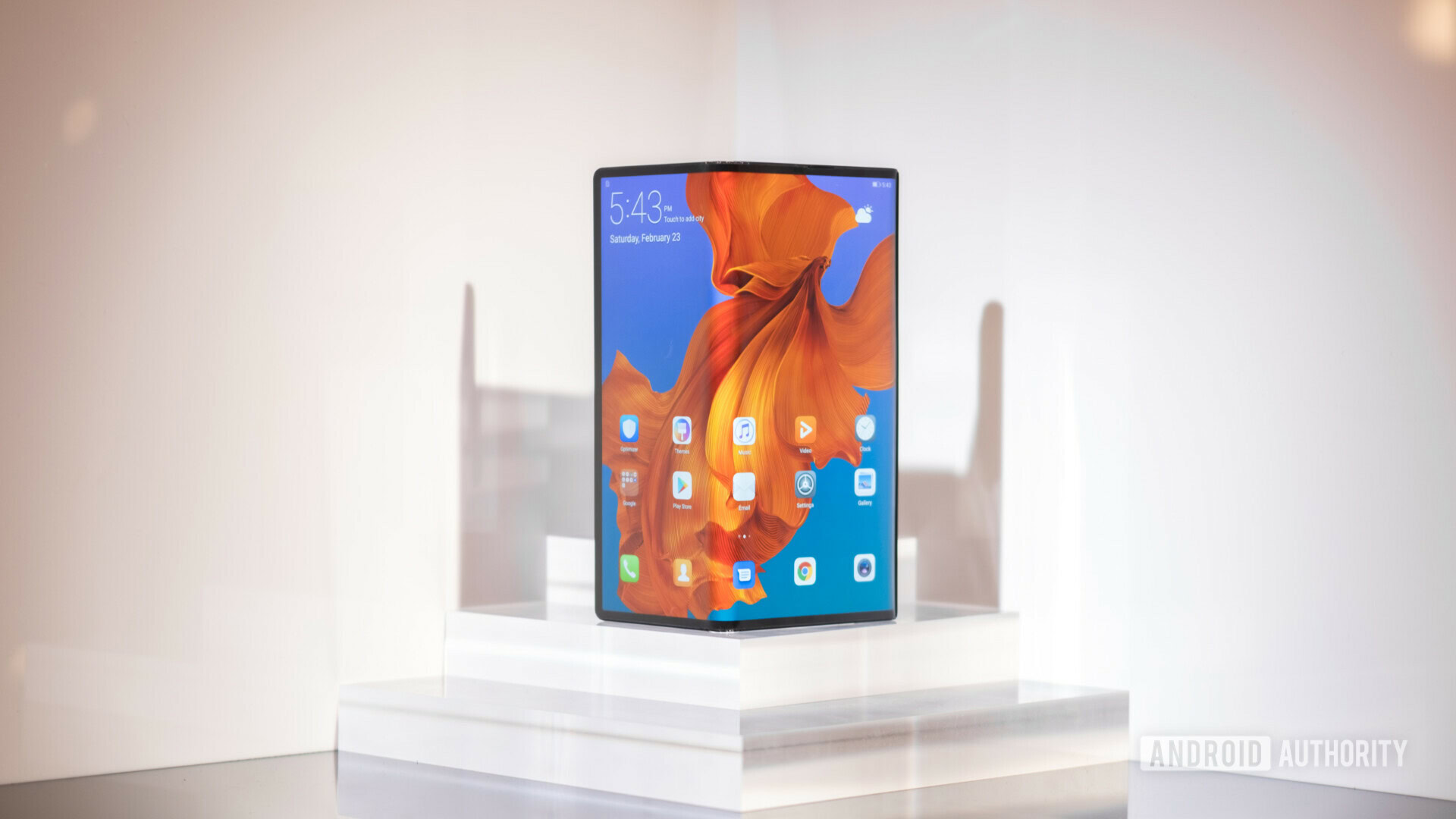
The reason the Mate X’s rear display has a different aspect ratio to the front is that there is a thick hand grip on one side of the back of the phone. This side bezel simultaneously provides easier handling of the otherwise bezel-free device but also houses various cameras and sensors.
Features
The main benefit of putting the cameras in a side bezel is that there’s no notch to be found anywhere on the Mate X’s display. At first glance, this might seem much better than the huge notch on Samsung’s Galaxy Fold but it’s not quite that clear-cut.
Putting the cameras in a bezel grip means that there's no notch to be found anywhere on the Mate X's display.
The most obvious downside of HUAWEI’s approach is that when you’re in tablet mode there is no camera directed at you (as far as I’m presently aware) meaning video calling along with selfies are both only possible when using the rear display in phone mode. The Galaxy Fold, by contrast, doesn’t suffer from this “problem.”
HUAWEI says the Mate X has a new Leica “selfie” camera, but with all cameras being housed on the bezel grip, the traditional distinction between a main camera and selfie camera is kind of lost. On the upside, the Mate X’s screen arrangement when closed – one on either side of the device – means that when you take a photo of someone, they can simultaneously see themselves on the display facing them while you use the other one as a viewfinder. HUAWEI calls this “mirror shooting” – insert Travis Bickle reference here.
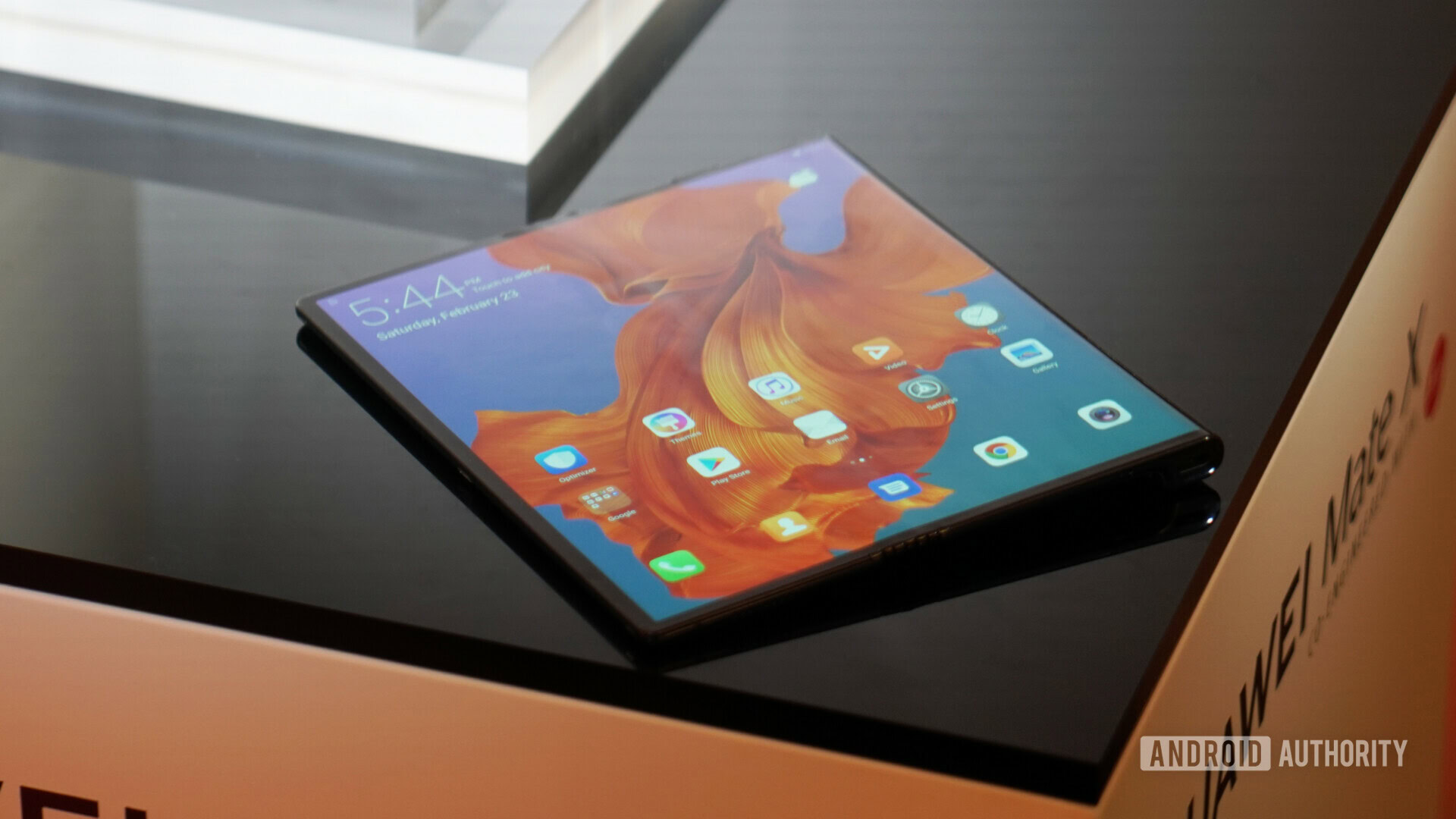
There are other pros and cons to the approach HUAWEI has taken here too – like the fact the Mate X’s display folds perfectly flat when it’s open and lies flush against itself when closed, but the grip means it doesn’t lay flat on a table when open. An external display also has the benefit of making it more accessible but does so at the risk of exposing the screen to a heightened risk of damage.
Software
During the demonstration we saw, the Mate X software responded rapidly and reliably, without any of the jarring glitches we’ve seen on other early foldable devices when transitioned between open and closed modes. Whether what we were seeing was full-blown Android or just a custom launcher built solely to handle the demonstration we cannot say for sure, as we were unable to play with it ourselves.
There are pros and cons to the approach HUAWEI has taken here, just as there are with the one Samsung took with the Galaxy Fold.
The better flexible phone layout – exterior vs interior fold – will only be decided over time, but I suspect the software will play a large part in how fast flexible products like these take root. Getting the software right is not going to be an easy task, just think how long split-screen mode took to become reliable.
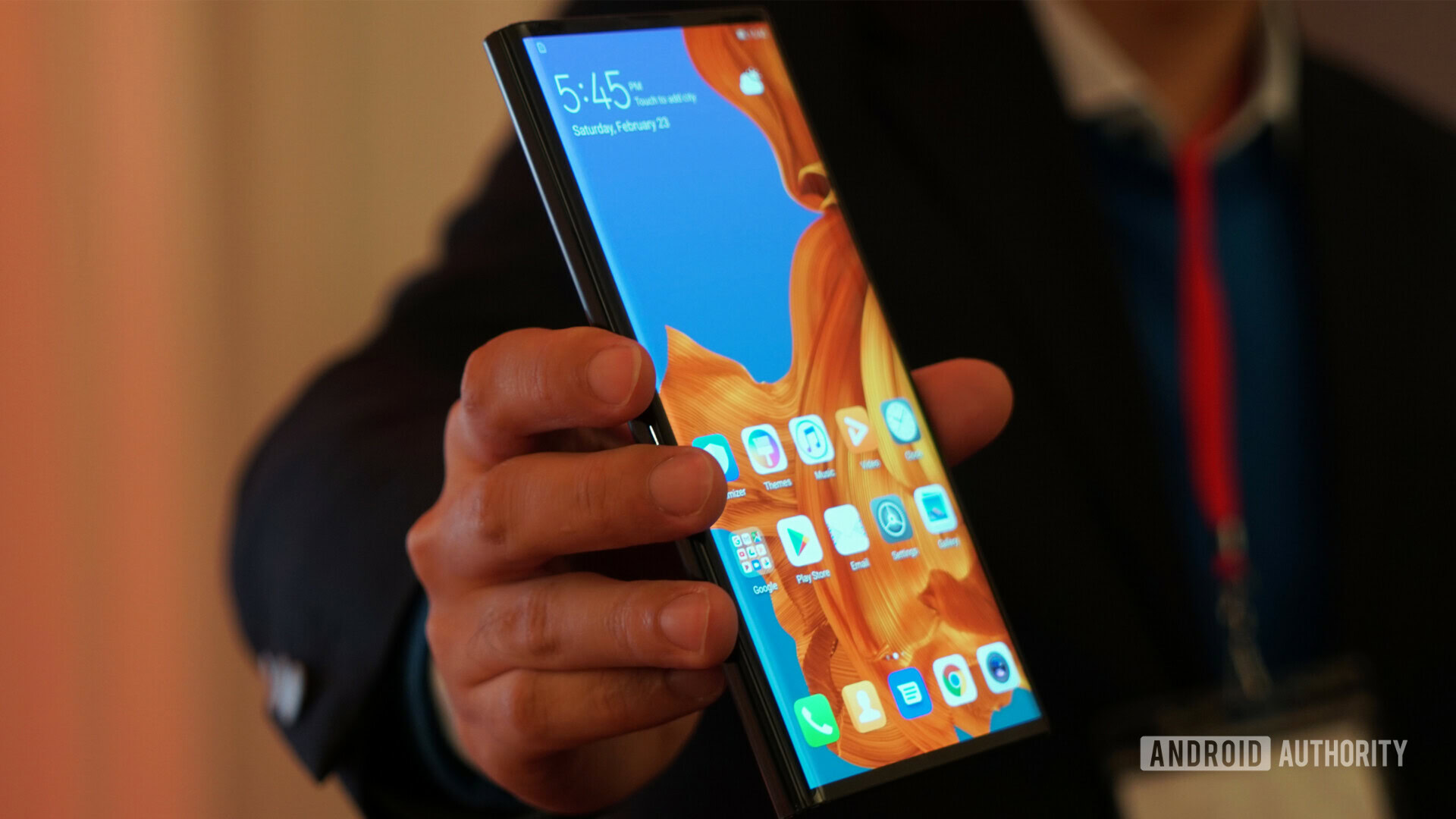
Both Samsung and HUAWEI’s software looks pretty good from what we’ve seen in their demos, but these are both first-gen devices and will undoubtedly have plenty of bugs and glitches to iron out. We’ll only be able to tell you more when we’ve had a chance to actually use them ourselves – the software may well be the reason we weren’t able to play around with the Mate X, but scarcity is an equally likely possibility.

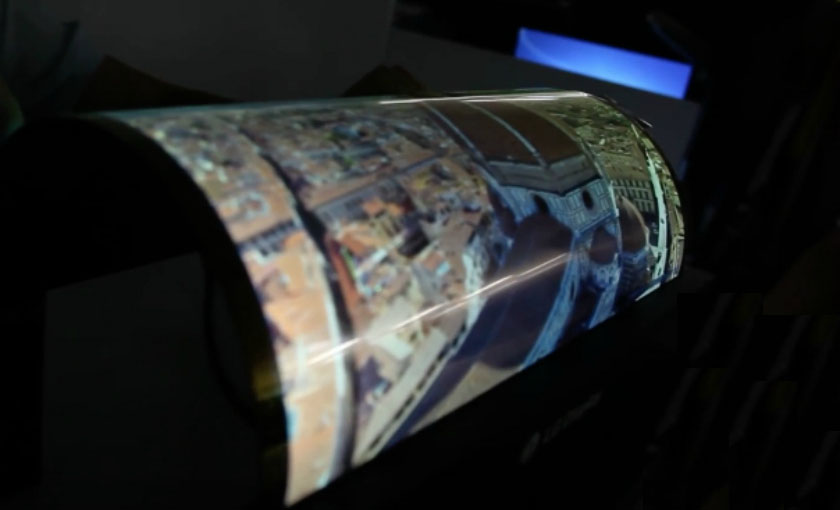
HUAWEI Mate X Specs
HUAWEI wasn’t sharing all the specs of the Mate X at our briefing, so there’s a decent amount of information we still don’t have. We do know that it will support 5G out of the box, at least assuming the carrier infrastructure is in place by the time it launches. With that in mind, we wouldn’t be surprised if the Mate X remains a China-exclusive product.
| HUAWEI Mate X | |
|---|---|
Display | 6.6-inch front screen (when closed), 19.5:9, 2480 x 1148 6.38-inch rear screen (when closed), 25:9, 2480 x 892 8-inch full view screen, 8:7.1, 2480 x 2200 |
SoC | HiSilicon Kirin 980 |
GPU | Arm Mali-G76 MP10 |
RAM | 8GB |
Storage | 512GB |
Cameras | Leica triple camera |
Battery | 4,500mAh dual batteries 55W SuperCharge charging |
Sensors | Side-mounted fingerprint sensor |
Network | 4.6Gbps 5G |
Software | EMUI |
Colors | Interstellar Blue |
According to HUAWEI, the Kirin 980 and Balong 5000 modem are capable of 4.6Gbps downlink speeds, which is double the industry standard for 5G and ten times what’s currently available with 4G networks. That bandwidth means you can download a 1GB movie in just three seconds at sub-6GHz speeds. The phone features 8GB of RAM and 512GB of internal storage.
The Mate X battery is 4,500mAh and supports 55W HUAWEI SuperCharge, which promises an 85 percent charge in just 30 minutes. We’re talking about two separate batteries on either side of the fold here, just like on the Galaxy Fold.
We can tell you the Mate X is just 5.4mm thick when open across most of the device, excluding the grip component. It closes up to be 11mm thick, and yes, it closes flush against itself. There’s a pill-shaped 2-in-1 power button/fingerprint scanner and a USB-C port on one end of the grip. It didn’t appear to have a headphone jack.
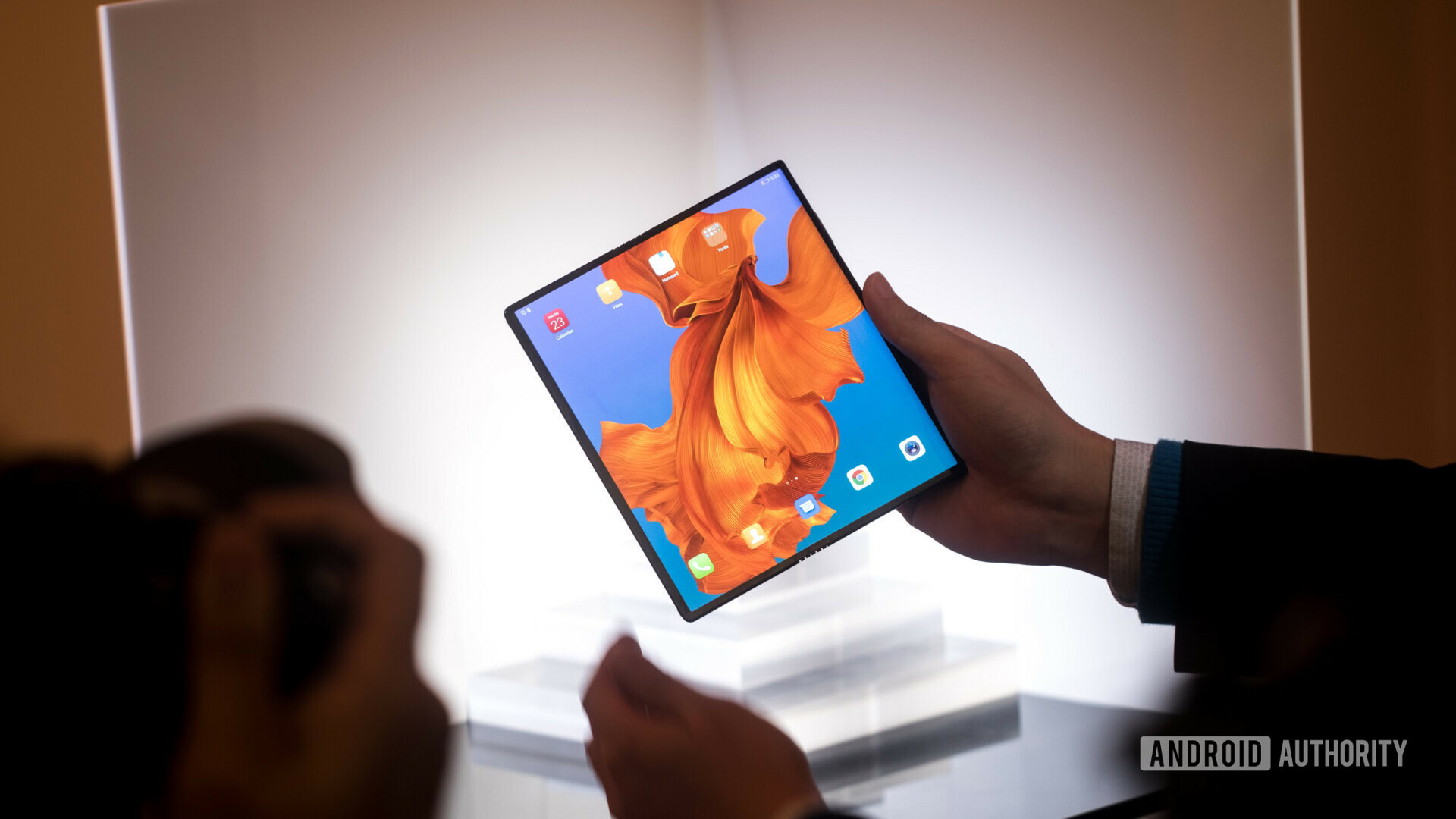
According to HUAWEI’s presentation, the Mate X is the world’s thinnest foldable phone, the world’s fastest 5G phone, and it also has the world’s fastest charging solution. These are all impressive details, but HUAWEI knows a bigger screen, faster charger, and better download speeds are not enough to beat Samsung on their own. HUAWEI may be huge in some parts of the world, but Samsung is huge everywhere.
Price and availability
Pricing for the HUAWEI Mate X is a critical factor when put side-by-side with the Samsung Galaxy Fold and Royole FlexPai. At nearly two thousand dollars, the Galaxy Fold sets a high bar. Any flexible device is going to remain very niche for a while yet. Update: HUAWEI revealed the Mate X (with 8GB RAM and 512GB of internal storage) will cost a blistering 2,299 euros when it arrives around this summer. Given that includes VAT, an approximate USD figure is about $2,110 before sales tax, although we’re unlikely to see it on direct sale in the U.S.
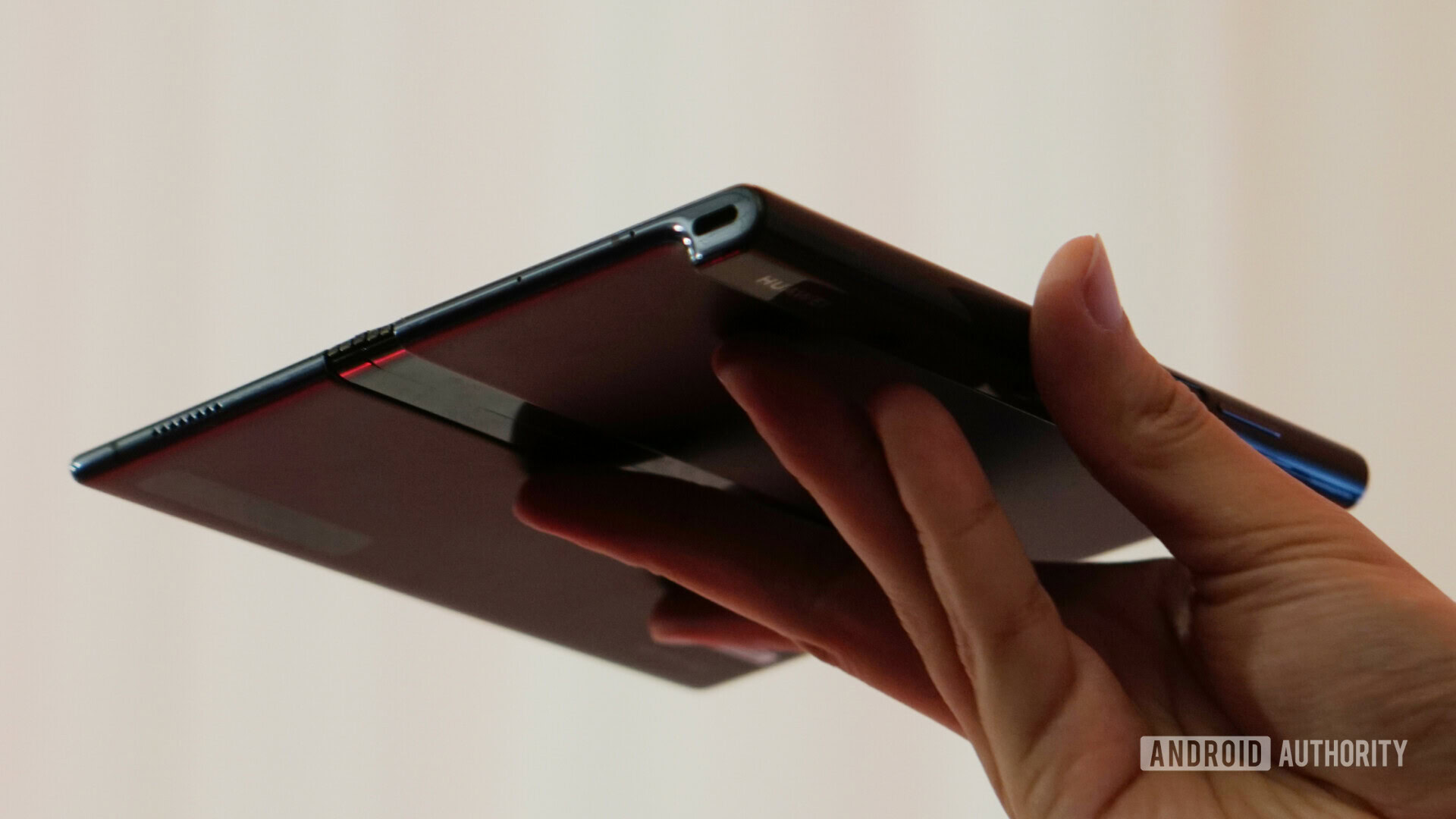
The durability of both devices will be intriguing. The HUAWEI representative using the Mate X in front of the media wasn’t wearing gloves, and wasn’t particularly delicate with it either. We saw it being opened and closed from many angles, and being used easily with one hand.
Without having been able to use both the Mate X and Galaxy Fold yet, I’m wary of highlighting one as better than the other. While the HUAWEI Mate X certainly appears to be the more accomplished product based on both companies’ highly curated presentations, Samsung isn’t exactly renowned for product missteps.
As I said, software, price, durability and practicality are going to take some time to absorb and there’s every possibility both devices will be great, simply by appealing to different preferences and use cases.
As tempting as it is to see this as China vs South Korea in a battle for flexible dominance, I’m still uncertain if it’s even worth going to war. Nevertheless, I haven’t been this excited by new tech announcements in a long while, so I’ll still happily watch the fight go down and, if nothing else, we’re dealing with evenly matched heavyweights.
Stay tuned for more on HUAWEI Mate X and more from MWC 2019. What do you think of the HUAWEI Mate X?